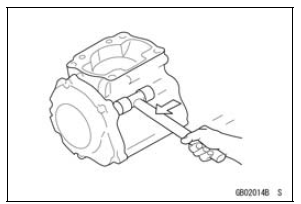

Use common sense during disassembly and assembly, excessive force can cause expensive or hard to repair damage.
When necessary, remove screws that have a non -permanent locking agent applied using an impact driver.
Use a plastic-faced mallet whenever tapping is necessary.

 Tightening Sequence
Tightening Sequence Gasket, O-ring
Gasket, O-ringCylinder Head Cover Installation
Replace the cylinder head cover gasket [A] with a new
one
Using a high flash-point solvent, clean off any oil or dirt
that may be on the silicone sealant coating area. Dry
them with a clean cloth.
Apply silicone sealant [B] to the cylinder head as shown
in the figure.
Sealant - Li ...
For Primary Fuel Injectors
Remove the air cleaner housing (see Air Cleaner Housing
Removal).
Disconnect the primary fuel injector connector [A].
Connect a digital meter to the terminals in each primary
fuel injector [A].
Measure the primary fuel injector resistance.
Primary Fuel Injector Resistance ...
Front Fork Assembly
Replace the following parts with new ones.
Slide Bushing
Guide Bushing
Oil Seal
Install the following parts to the inner tube [A].
Dust Seal [B]
Retaining Ring [C]
Apply grease to the oil seal lips.
Install the oil seal [A] so that the stamp side faces lower
side.
Insta ...